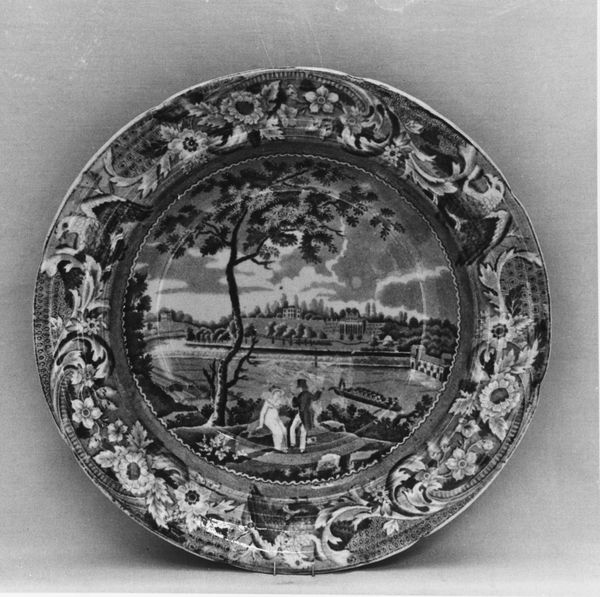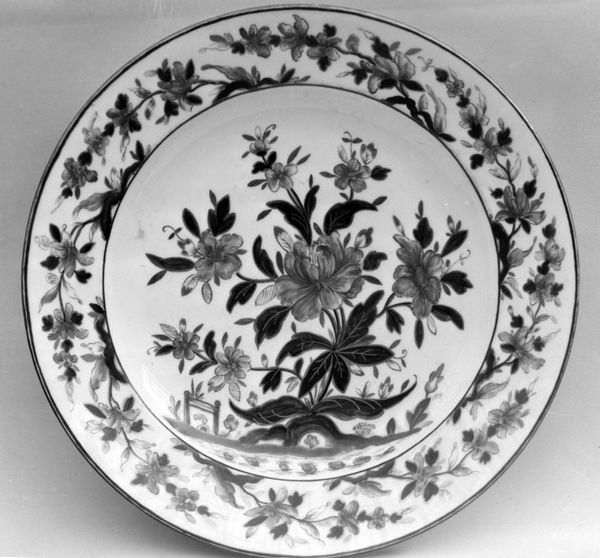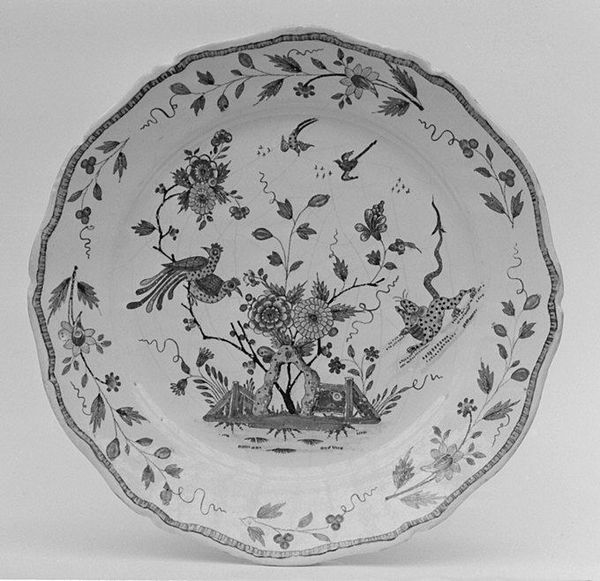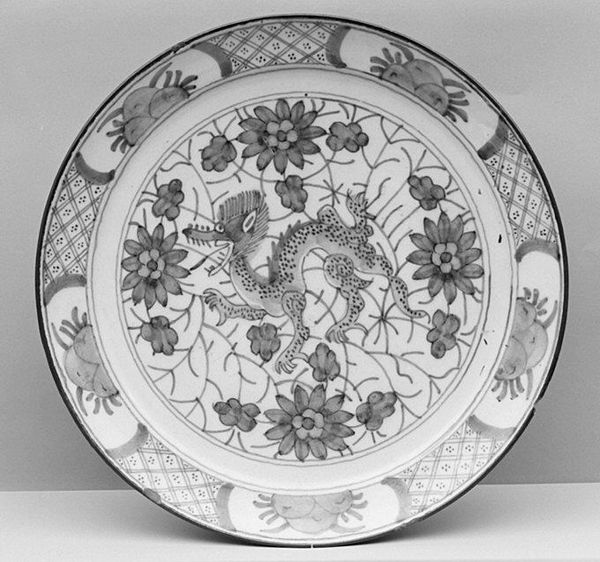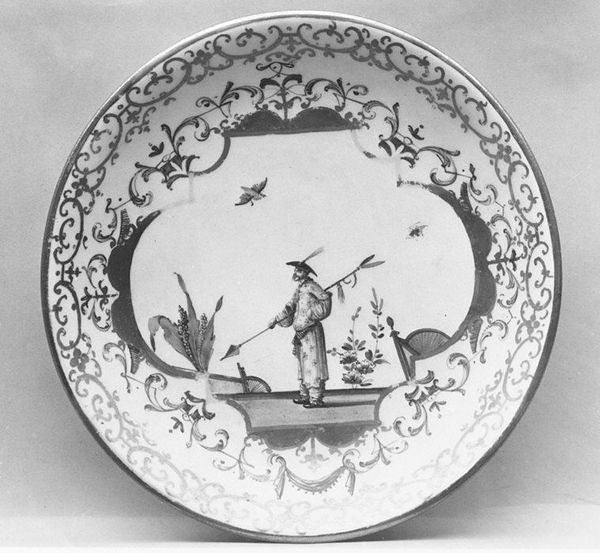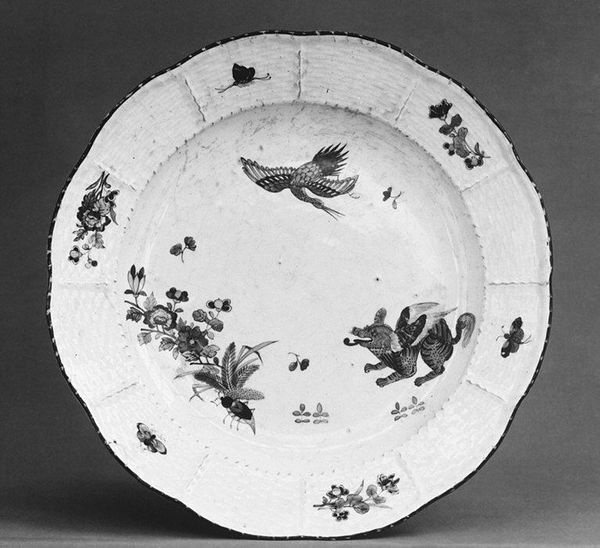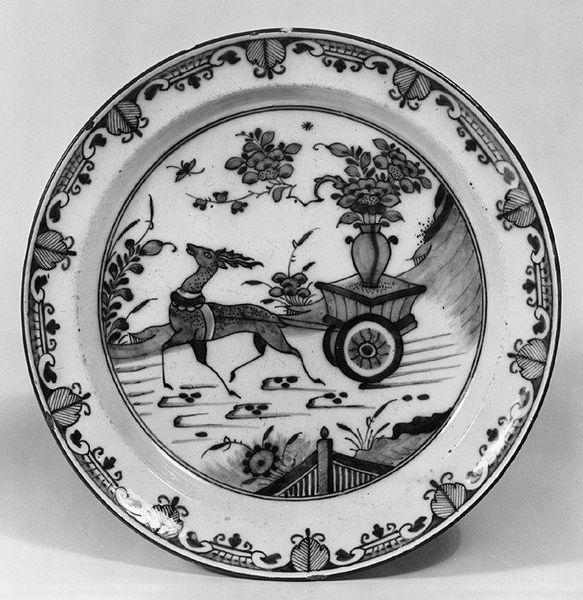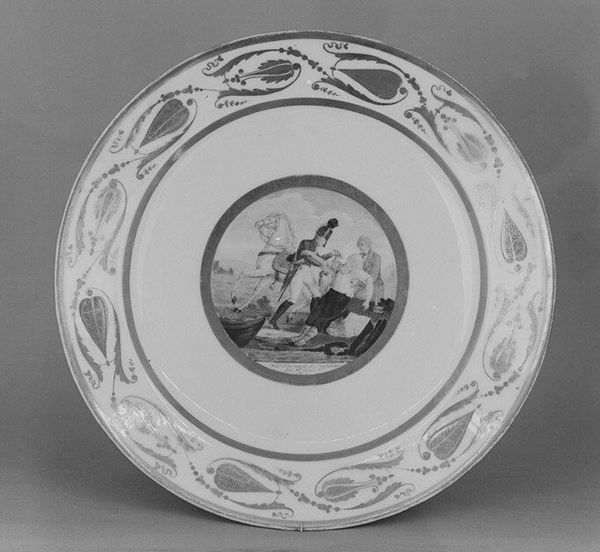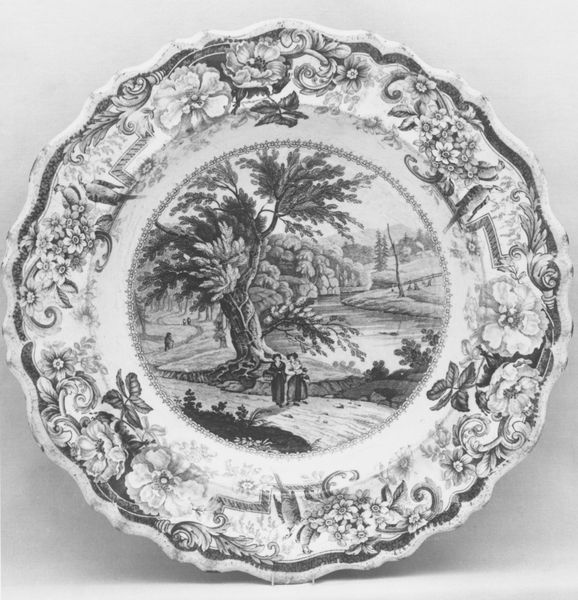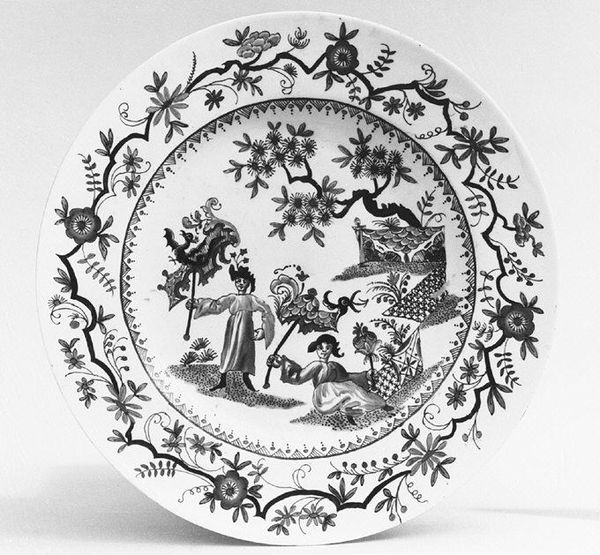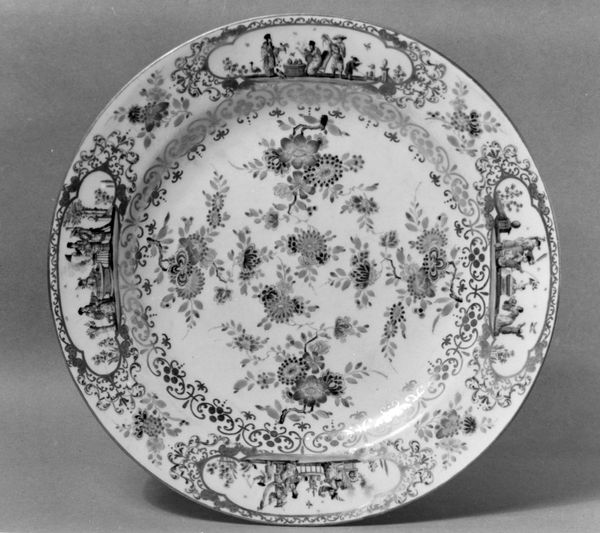
drawing, painting, ceramic
#
drawing
#
painting
#
asian-art
#
landscape
#
ceramic
#
figuration
#
decorative-art
Dimensions: 2 × 15 1/8 in. (5.1 × 38.4 cm)
Copyright: Public Domain
Curator: Let’s turn our attention to this nineteenth-century ceramic plate crafted by Adam Friedrich von Löwenfinck. It's currently housed at the Metropolitan Museum of Art. My initial reaction is how exquisitely the porcelain takes to the subtle ink paintings, but what grabs you first? Editor: Its intricate details evoke a sense of bygone craftsmanship. Looking closer, I’m struck by how the pictorial element appears at the center like a stage for performative culture—a slice of life amidst delicate decorations. What narrative unfolds within your framework? Curator: I think this plate, likely intended for display more than practical use, speaks volumes about 19th-century Eurocentric fascination with East Asian visual languages and aesthetics. Its visual rhetoric certainly reflects how Asia was imagined. How might it participate or subvert historical expectations of porcelain? Editor: Well, thinking materially, it shows how the labor of ceramic production intertwines with artistic expression. Porcelain, a material requiring precise techniques, elevates what might otherwise be just an object into a valuable cultural artifact that transcends its initial function through carefully articulated decorations and craftsmanship. It suggests it’s not mere consumption, it also signifies careful consideration, and the artistry that went into it. Curator: Exactly. This intersection can be explored by examining questions of authorship, authenticity, and how colonial structures mediated exchanges. Whose story is told on this plate, and whose is omitted? Consider it more like a representation, than documentation of factual cultural events. Editor: It underscores how objects acquire meaning not only through aesthetics but by their implication in economic systems and power structures. I wonder, thinking materially, if we investigated further into how exactly the landscapes were made, could the production give us some additional insight? Curator: Absolutely. Considering the complex social and political implications further contextualizes such objects within intersectional frameworks, thereby challenging historical marginalization of those implicated in art and material creation. I love how we've circled back, drawing together these aspects. Editor: And, at the end of it, the conversation about craft production reminds us about a tangible labor element we should recognize and appreciate for the future.
Comments
No comments
Be the first to comment and join the conversation on the ultimate creative platform.
